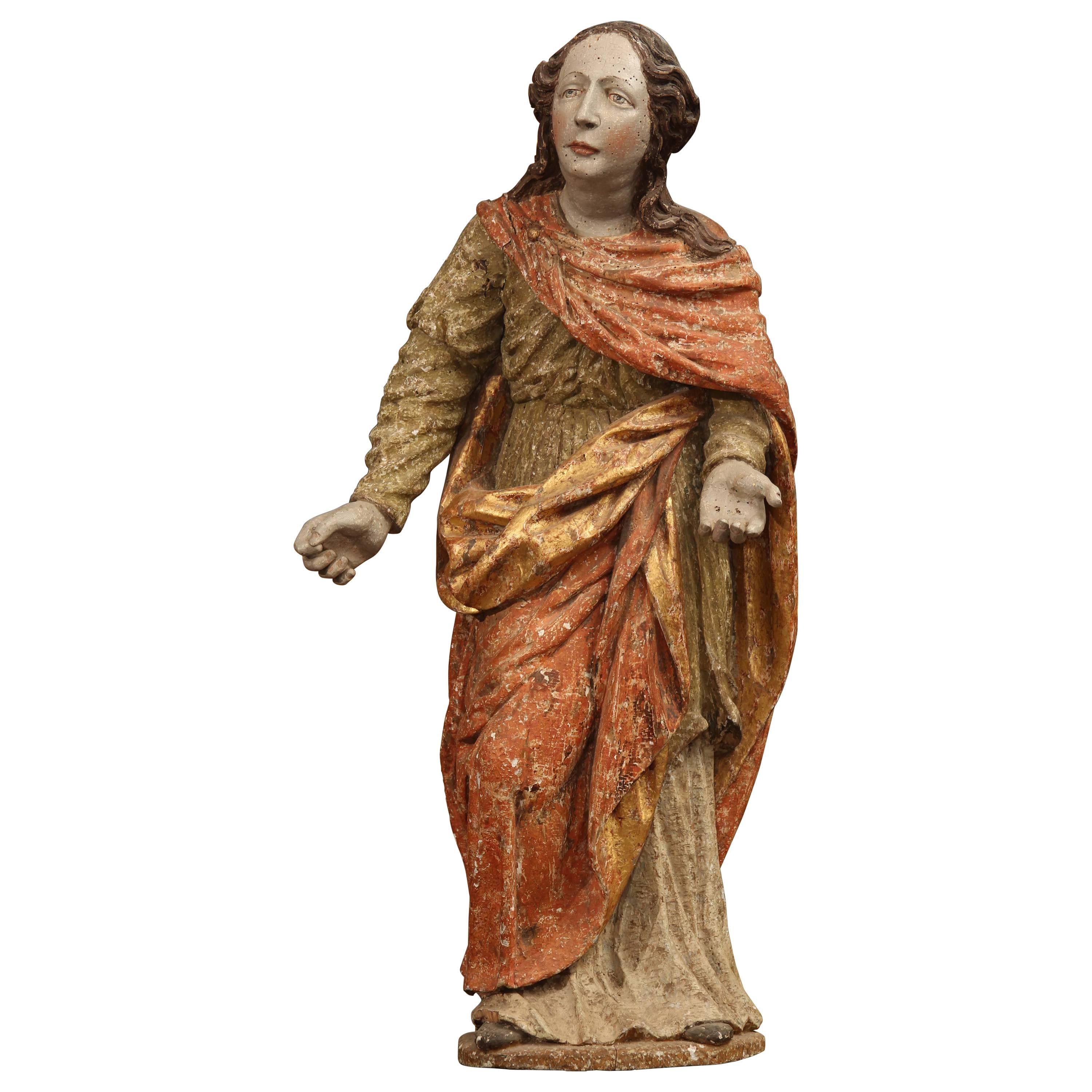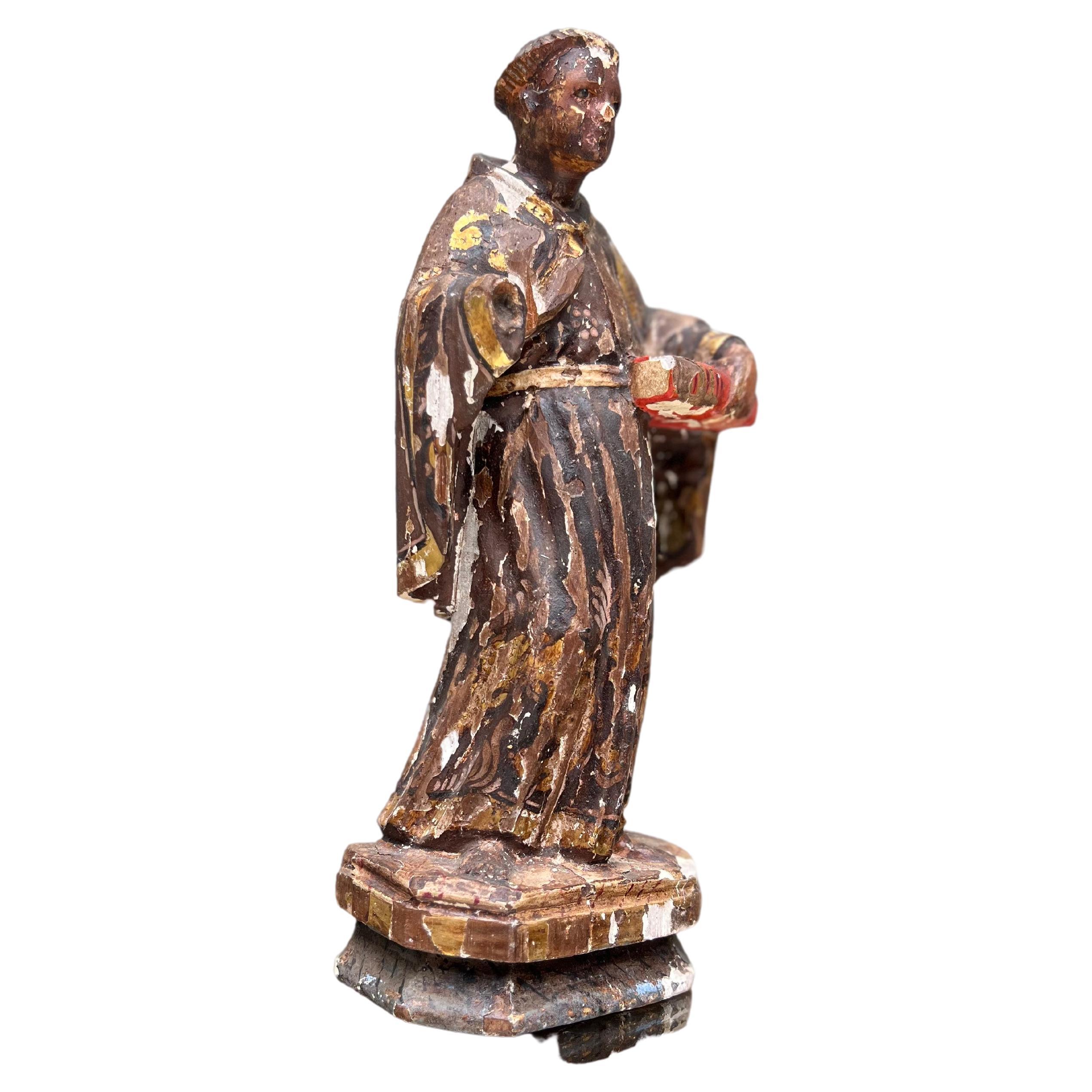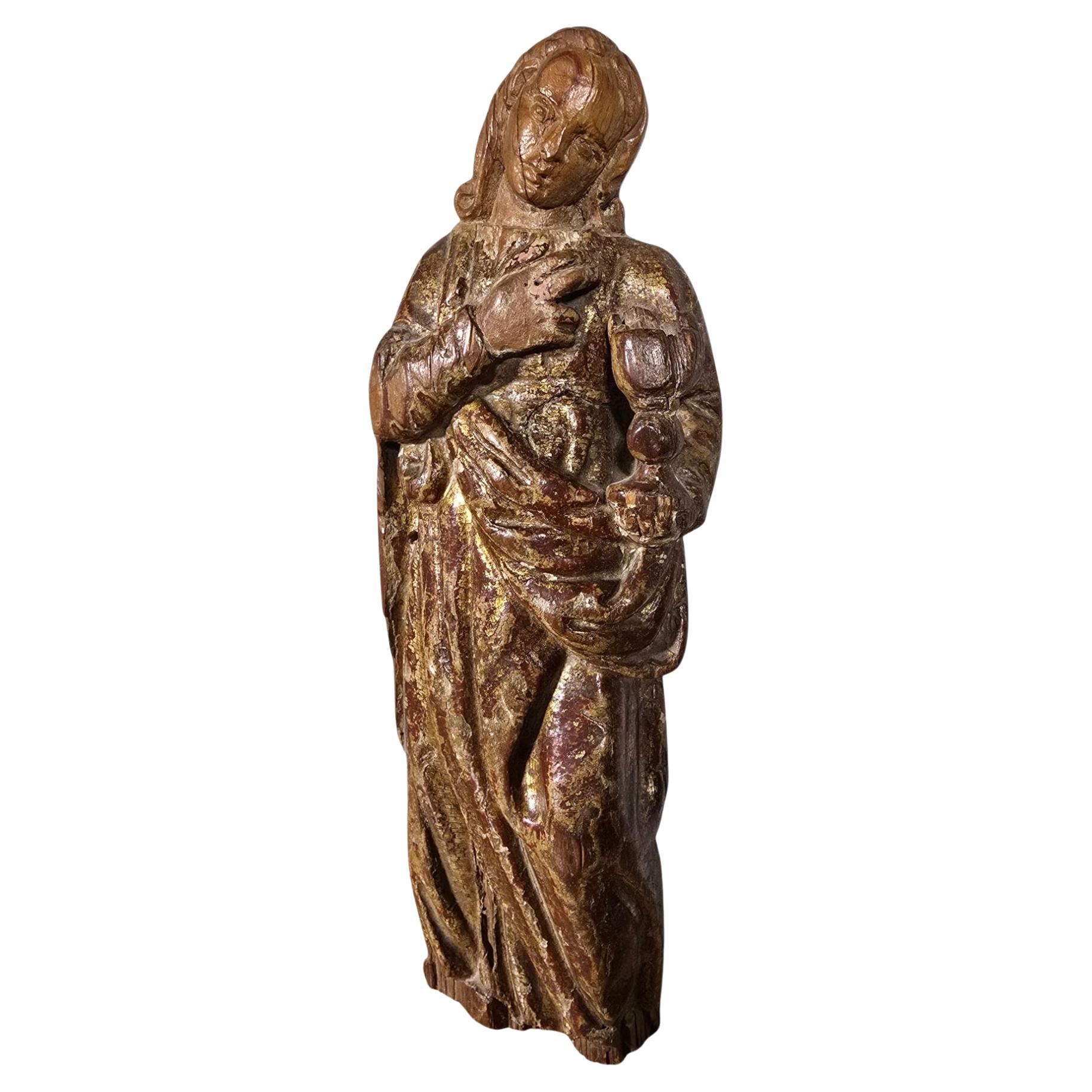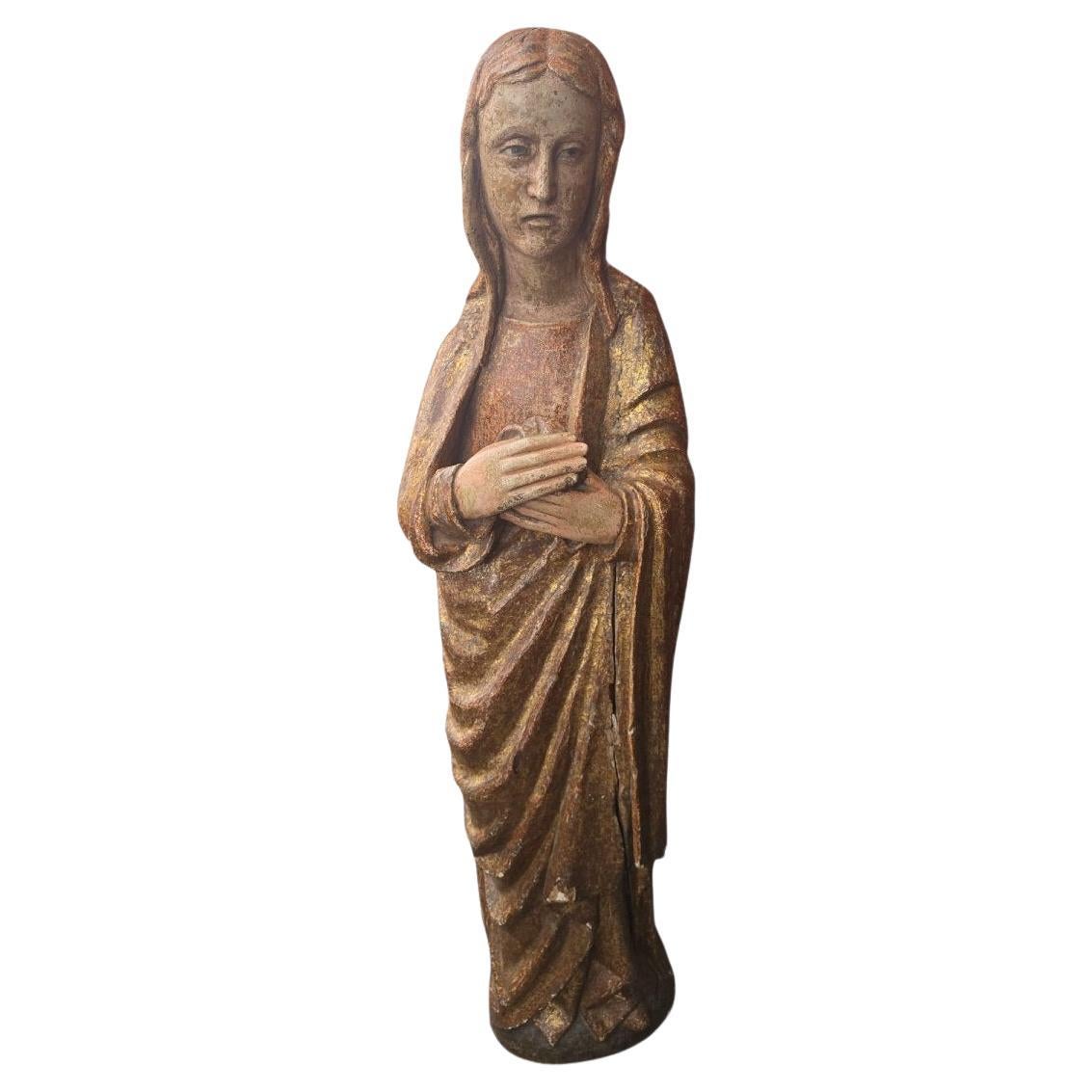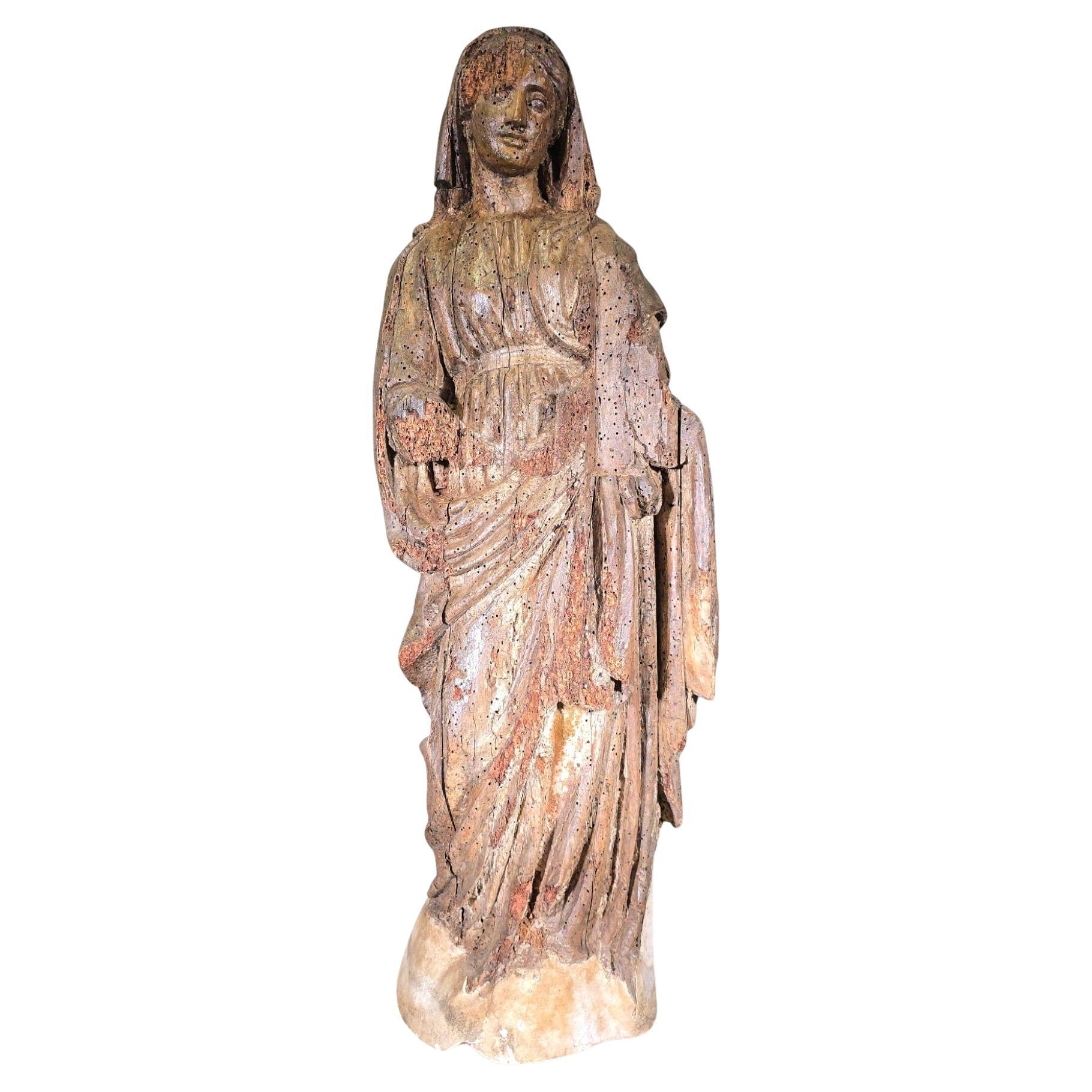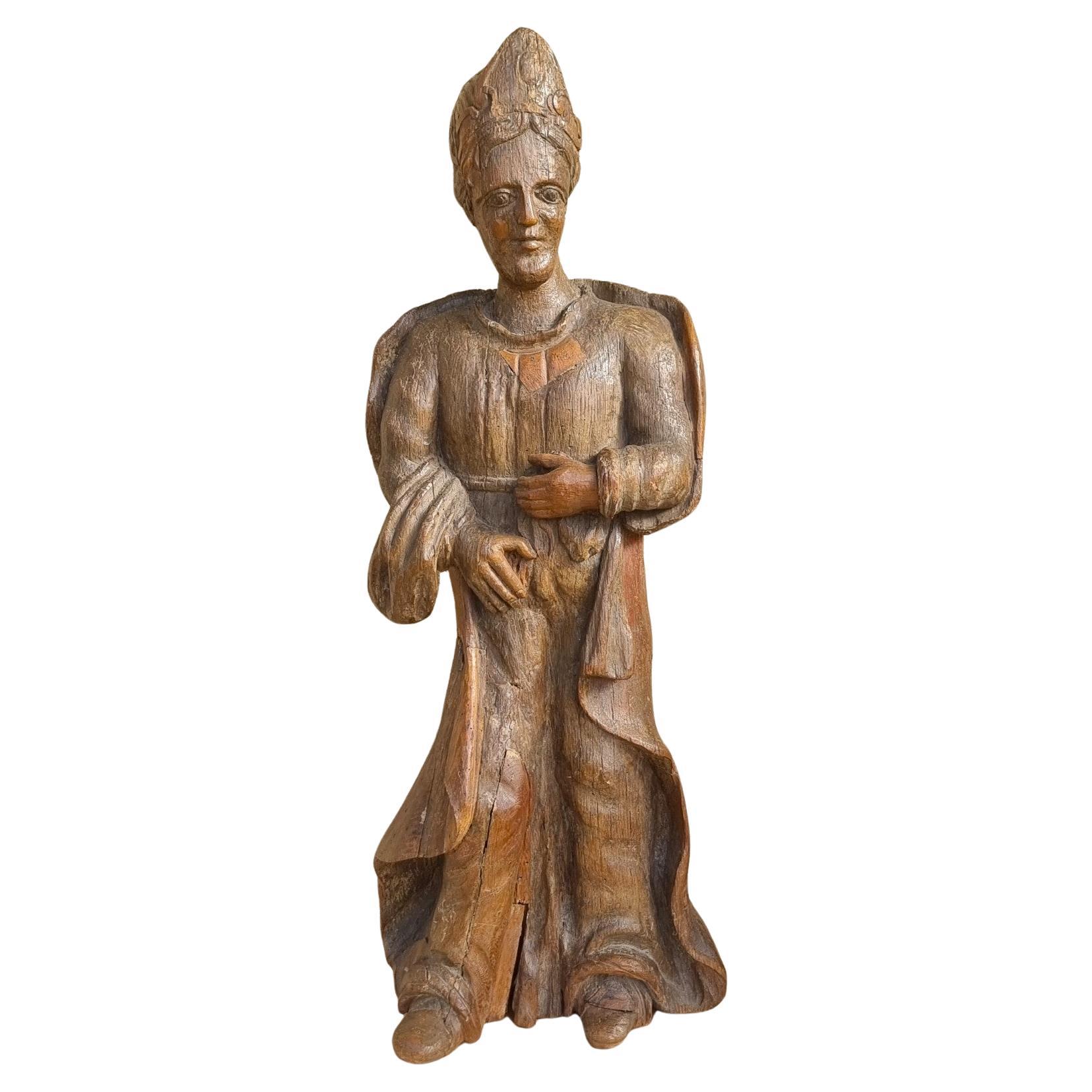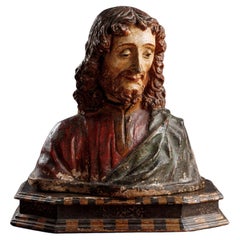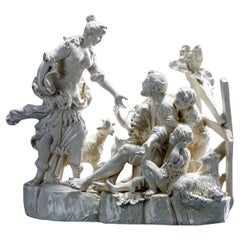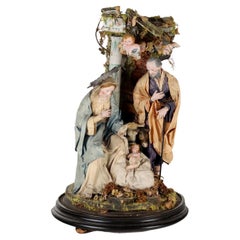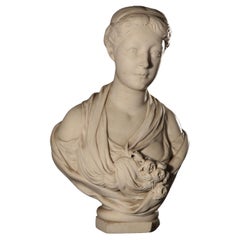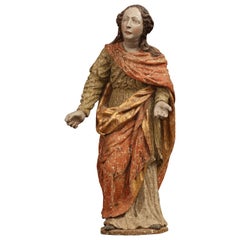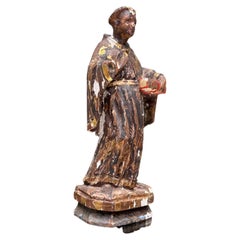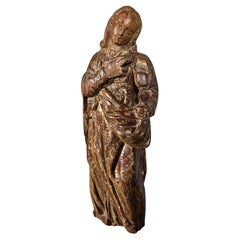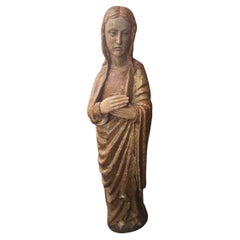Items Similar to Virgin of the Nativity. Sculptor active in the Adriatic area, early 15th century
Want more images or videos?
Request additional images or videos from the seller
1 of 7
Virgin of the Nativity. Sculptor active in the Adriatic area, early 15th century
$27,392.51
$34,240.6420% Off
£20,325.38
£25,406.7320% Off
€22,880
€28,60020% Off
CA$38,257.75
CA$47,822.1920% Off
A$41,491.44
A$51,864.3020% Off
CHF 21,792.88
CHF 27,241.1020% Off
MX$503,986.64
MX$629,983.3020% Off
NOK 272,703.43
NOK 340,879.2920% Off
SEK 256,765.51
SEK 320,956.8920% Off
DKK 174,231.32
DKK 217,789.1520% Off
About the Item
Polychrome wooden sculpture depicting the lying Madonna, also called the Virgin of the Nativity. Mary is reclining, her right hand supporting her head, while her left hand is outstretched and resting on her hip. She is dressed in a long tunic and a cloak that is red on the outside and blue on the inside, which completely wraps around her legs. The head is veiled; on the face with fine, delicate features an absorbed expression.
- Dimensions:Height: 9.85 in (25 cm)Width: 59.06 in (150 cm)Depth: 15.75 in (40 cm)
- Style:Other (Of the Period)
- Materials and Techniques:
- Place of Origin:
- Period:
- Date of Manufacture:1400s
- Condition:Wear consistent with age and use.
- Seller Location:Milano, IT
- Reference Number:1stDibs: LU1721244078132
About the Seller
4.9
Platinum Seller
Premium sellers with a 4.7+ rating and 24-hour response times
Established in 2015
1stDibs seller since 2015
434 sales on 1stDibs
Typical response time: 1 hour
- ShippingRetrieving quote...Shipping from: Milan, Italy
- Return Policy
Authenticity Guarantee
In the unlikely event there’s an issue with an item’s authenticity, contact us within 1 year for a full refund. DetailsMoney-Back Guarantee
If your item is not as described, is damaged in transit, or does not arrive, contact us within 7 days for a full refund. Details24-Hour Cancellation
You have a 24-hour grace period in which to reconsider your purchase, with no questions asked.Vetted Professional Sellers
Our world-class sellers must adhere to strict standards for service and quality, maintaining the integrity of our listings.Price-Match Guarantee
If you find that a seller listed the same item for a lower price elsewhere, we’ll match it.Trusted Global Delivery
Our best-in-class carrier network provides specialized shipping options worldwide, including custom delivery.More From This Seller
View AllChrist the Redeemer. Andrea Ferrucci and workshop (Fiesole c. 1465 - 1526)
By Non-Standard Furniture and Lighting
Located in Milano, IT
Painted stucco sculpture representing the bust of Christ the Redeemer. Dressed in a red tunic embellished with a gold collar, a blue cloak is draped over the left shoulder. The face ...
Category
Antique 18th Century and Earlier Italian Other Busts
Materials
Stucco
$4,549 Sale Price
20% Off
Erminia among the shepherds. Naples, Capodimonte Manufacture 19th century
By Capodimonte
Located in Milano, IT
White glazed ceramic depicting Erminia among shepherds. Erminia is shown from the side, standing with her robe in the wind, helmet under her arm, and shield at her feet; she is stret...
Category
Antique 1860s Italian Other Mounted Objects
Materials
Ceramic
$4,022 Sale Price
20% Off
Great Neapolitan Nativity Scene Ancient Architectural Capriccio '800
By Non-Standard Furniture and Lighting
Located in Milano, IT
On a round base is placed the nativity composed of the Holy Family with the ox and donkey, three cherubim fly to heaven. The seated Madonna and St. Joseph standing turn an adoring ga...
Category
Antique Early 1800s Italian Other Figurative Sculptures
Materials
Terracotta, Silk, Wood, Cork
$4,731 Sale Price
20% Off
Spring marble bust, first half of the 19th century
By Non-Standard Furniture and Lighting
Located in Milano, IT
Female bust of maiden with bouquet of roses ( Spring). The maiden is portrayed with a slight smile and a deep, attentive gaze, combed with a low chignon and hair lightly held back by...
Category
Antique Mid-19th Century Italian Other Busts
Materials
Marble
$13,887 Sale Price
20% Off
Faun with Cymbals in Bronze Italy Late 19th Century
By Non-Standard Furniture and Lighting
Located in Milano, IT
Bronze sculpture depicting faun with cymbals on red marble base.
Category
Antique 1880s Italian Other Figurative Sculptures
Materials
Bronze
$3,495 Sale Price
20% Off
Figure of ancestress "Jonyeleni" in wood Bamana Art MaliThird Quarter of the 20th cent
By Non-Standard Furniture and Lighting
Located in Milano, IT
A figure of remarkable formal harmony and compactness with large rounded breasts that allude to fertility and nurturing capacity, but also to the loveliness of the girl that promotes...
Category
Vintage 1980s Malian Other Abstract Sculptures
Materials
Wood
$8,715 Sale Price
20% Off
You May Also Like
18th Century Italian Saint
Located in Seattle, WA
Beautifully carved wood saint , late 18th century , Italy.
Category
Antique 18th Century Figurative Sculptures
Antica scultura lignea Raffigurazione di Santo
Located in Milano, MI
Antica scultura lignea Raffigurazione di Santo
Descrizione
Antica scultura policroma lignea
Presenta mancanze date dal tempo
1800
Produzione: Ita...
Category
Antique Mid-19th Century Italian Figurative Sculptures
Materials
Wood
Large Sculpture of the Virgin Mary from the 16th Century Dimensions: 98x35x25 cm
Located in Madrid, ES
This majestic sculpture of the Virgin Mary, created in the 16 th century, is a unique piece of sacred art that stands out for its impressive detail and the beauty of its form. Crafte...
Category
Antique 16th Century Figurative Sculptures
Materials
Fruitwood
Romanesque Sculpture of the Virgin – 15th Century
Located in Madrid, ES
"Romanesque Sculpture of the Virgin – 15th Century"
Period: 15th century
Romanesque
Technique: Carved and polychromed solid wood
Dimensions: 124 x 36 x 17 cm
Impressive Romanesque s...
Category
Antique 15th Century and Earlier Italian Greco Roman Figurative Sculptures
Materials
Wood
Large Sculpture of the Virgin Mary from the 16th Century Dimensions: 98x35x25 cm
Located in Madrid, ES
This majestic sculpture of the Virgin Mary, created in the 16 th century, is a unique piece of sacred art that stands out for its impressive detail and the beauty of its form. Crafte...
Category
Antique 16th Century Figurative Sculptures
Materials
Fruitwood
16th-century Flemish Female Wooden Sculpture
By A. Manzoni
Located in Villa Verucchio, Emilia-Romagna
Prologue: An Ancient Mastery the Wooden Sculpture
We begin our journey through Gothic art by presenting a magnificent Late Gothic Female Wooden Sculpture from the Flemish 500s. This ...
Category
Antique 16th Century Belgian Renaissance Figurative Sculptures
Materials
Wood
More Ways To Browse
Antique Capo
Fabrication Francaise
Felguerez Sculpture
Figurines Hungary
Gaston Bronze
German Antique Bronze Sculptures
German Male Nude
Grand Tour Narcissus
Guillemin Bronze Sculpture
Keramos Austria
Lapis Lazuli Figure
Lladro Guest
Madonna Statues
Meissen Child
Metal African Sculpture
Mexican Terracotta Sculpture
Nude Pottery
Pre Columbian Terracotta
